How it all started
One of the movies I recently watched which really captured my imagination was Greta Gerwig’s “Little Women”. Obviously, I had heard of “Little Women” before watching Gerwig’s 2019 adaptation. One keeps seeing it on the Recommended shelves of Waterstones. It’s one of those books that unashamedly flaunts its cover rather than hide amidst a queue of book spines turned towards the roving eyes of impatient customers. As an English literature student, it’s definitely one of the “I assume you’ve already read this, so we’re not even going to include it on the reading list” books, alongside “Pride and Prejudice”, “Jane Eyre” and “Lolita”. But no, I never got round to reading it, until after I saw Gerwig’s movie version.
I was so impressed by Greta Gerwig’s “Little Women” that after the trip to the cinema, I decided to take a detour and walk my friend home just so we could discuss it. The ending (SPOILER ALERT) was especially intriguing. I did not imagine Louisa May Alcott had it in her to include two endings in her book: the “expected” one being the conventional happy ending, where Jo marries and set up a school with Professor Bhaer, and they live happily ever after; the “real” one being that Jo remains an unmarried woman and publishes her book independently. The multiple-endings technique seems way too metafictional for a nineteenth-century sentimental, moralistic novel. Sure, one might find that in postmodernist novels like John Fowles’ “The French Lieutenant’s Woman” (great book, by the way), but not Louisa May Alcott.
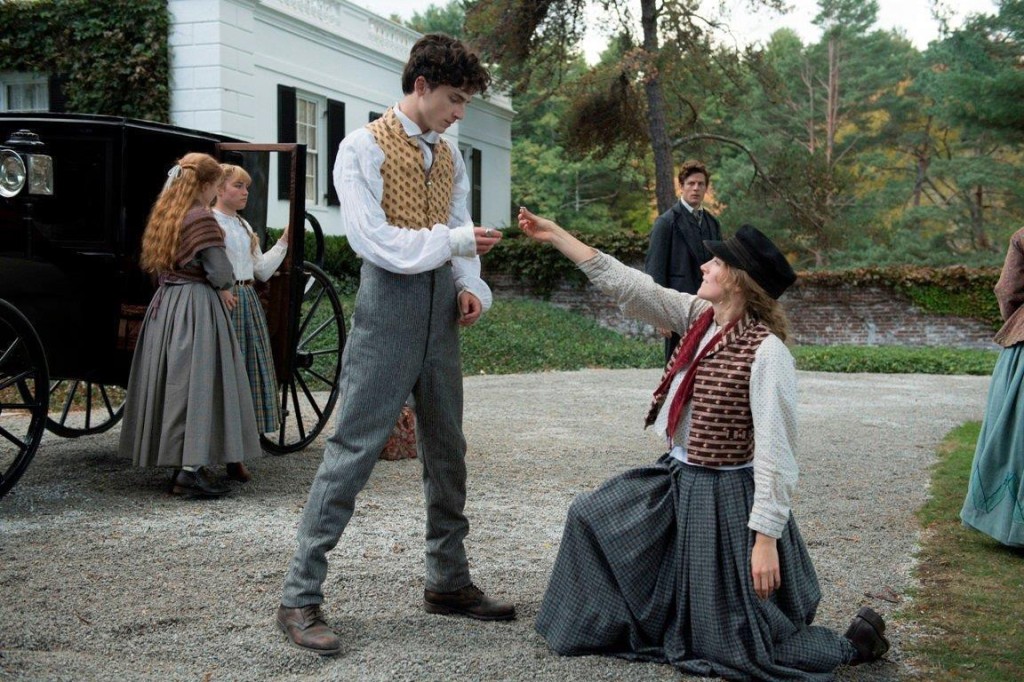
Anyway, the ending of Gerwig’s movie intrigued me enough to pick up the actual novel and read it, and since then my respect for Gerwig’s version has only increased. It amazed me how Greta Gerwig blended aspects of Louisa May Alcott’s own life with the novel to create her own unique narrative, making it into something timely for the modern audience while still being progressive and, well, portraying a reality more glaringly realistic than the novel was ever capable of. It was as if she had decoded a secret message which Alcott had inscribed into her novel.
Essentially, the novel itself is nowhere close to being radical or progressive compared to some other famous works written by women during that time, the most famous being perhaps “Jane Eyre” and “Wuthering Heights”. In fact, it conforms to nineteenth-century patriarchal ideology in many ways. It instructs women to be self-effacing, to be courteous to men, to relinquish their ambitions for work and focus on domestic chores. It tells them that men are to be the head of the household, and that they know best. A married couple faces many challenges but it is only when the wife learns to serve her husband and fulfill her domestic duties that the husband can return the love the wife dearly yearns for. Even though Jo loves writing, in the novel, she finally finds satisfaction not in gaining financial freedom through writing, but in marrying Professor Bhaer, an old and poor German professor, and in supporting him in his dream of running a school. So yeah, not exactly what you would call the dream of a modern feminist, or even a feminist of the nineteenth century.
And so it comes as a huge surprise to me when Greta Gerwig is able to subvert the basic elements of the novel and mould the narrative in accordance with her own feminist vision. I would like to elaborate on the word “feminist” because in its modern context, it easily implies an uncompromising stance on political issues and often an enduring hatred for men in general. That is totally not the case in Gerwig’s movie. In the movie, we follow these little women, and we see them struggle between their own ambitions and what society expects of them. The movie does not address political issues or assert any stance outright, but rather shows the difficult situations women had to face back then in a way which still resonates with a 21st-century movie-goer. How, against such difficulties, these women emerge heroic was what stirred my imagination.
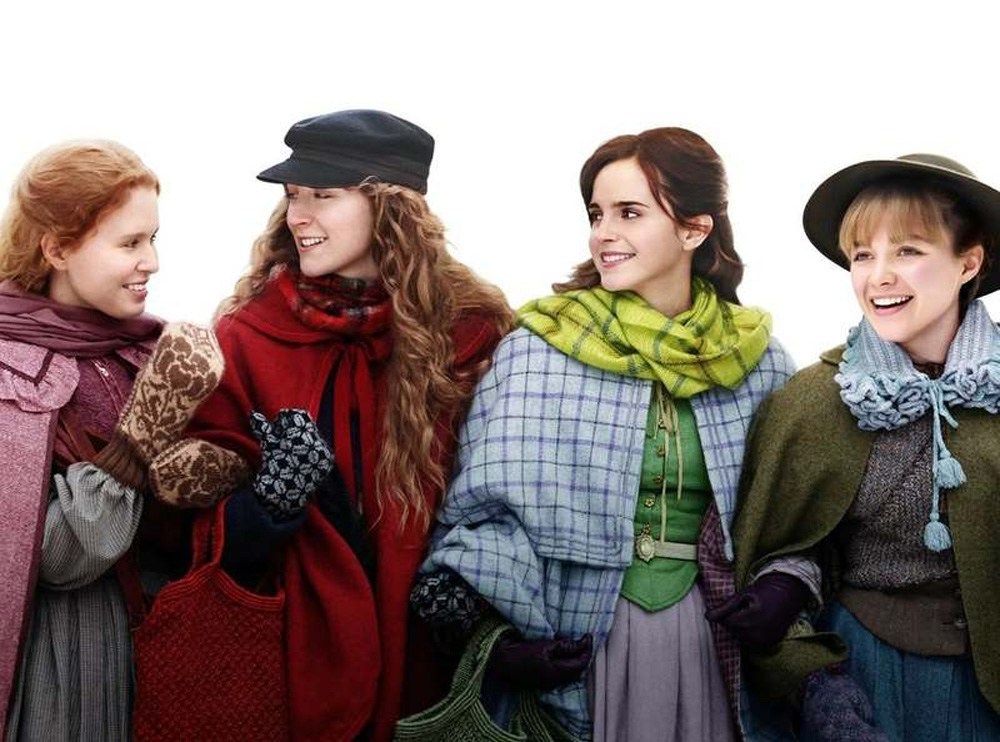
Non-linear structures and nonconformity
The non-linear structure of the movie really highlights the difference between expectation and reality. Using different colour palettes, Gerwig shows how the past (corresponding to Part One of the novel) is tinged with rosy nostalgia, and the present (corresponding to Part Two), with its colder colour tones, is seen as a reality much harsher than the past. Immediately, this departure from a conventional linear structure rejects the expectations set out by a Bildungsroman novel, in which we might expect progress, growth, maturity and finally reconciliation (usually a marriage). Thus we are confronted with a drunken Laurie in Paris, a weak and frail Beth, a Jo writing no longer for the pleasure of it, and a Meg stricken by poverty. We see how, in the warm confines of home, the sisters’ talents and passions may develop freely, whereas in the real world they must struggle to preserve their values. By placing past and present, nostalgia and reality, side by side, I think Gerwig highlights the difficulty of practising moral values in the real world. It’s true that Alcott’s novel also presents the sisters with obstacles that they must overcome. However, in the novel, these obstacles always seem to be part of a grander plan (part of the Pilgrim’s Progress that the sisters play through life). Either it’s Marmee’s way of teaching them a moral lesson, or it is designed so that they may grow in maturity, and the sisters are usually rewarded at the end of the chapter: they grow more like the ideal motherly figure which Marmee represents, or they get married, or they are loved by their husbands. In the reality of Gerwig’s movie version, the sisters are on their own. They live with their own choices. While Marmee is still seen as a wise figure (Laura Dern seemed to me so!) who provides guidance and advice, she also lets them set off into the real world and face their challenges by themselves. The non-linear structure of the movie thus makes the narrative more realistic, more fitting to our context, and more detached from the Bildungsroman tradition which Alcott’s novel follows. Unlike the novel, Gerwig’s version does not tell her women audiences to “do that, and you shall be rewarded”. It’s more like “follow your dreams, but you may not always be happy, and that’s reality”.
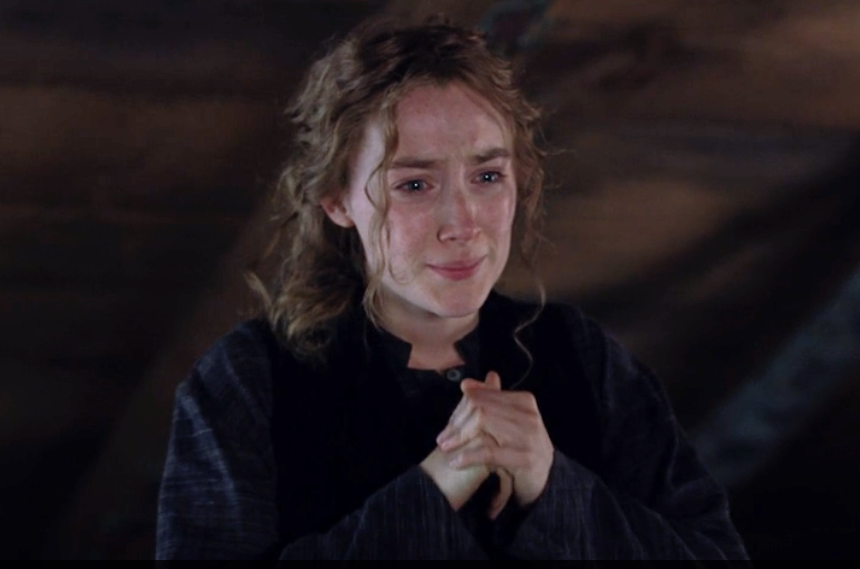
Romance
Romance obviously plays a big part in “Little Women”. Amy’s unrequited love for Laurie, Laurie’s love for Jo, Jo and Friedrich Bhaer’s romance, Meg and John Brooke’s relationship etc. For me, the way the relationships of “Little Women” are envisioned in movie versions can either be very empowering or dissatisfying. It’s an especially tricky one when Laurie, rejected by one March sister, turns to marry the other one instead. Amy could easily be seen as the “easier” option.
It is not enough to say that history is something we should move past, but to remember that progress only emerged through great suffering and sacrifice, and the sense of struggle for women in the nineteenth century remains very much relatable in this modern day.
What I like about Gerwig’s version is that the women never compromise in the face of love. Yes, I say that as if love is a challenge rather than a reward, a kind of reconciliation. I think it’s important to challenge this assumption, especially when reading Alcott’s novel. While it idealizes the home and the lovely matrimonial union which creates it, it is important to remember that the concept of perfect womanhood in a loving relationship was predicated on the fact that women had to rely on men back then. For women in the nineteenth century, there were little means of supporting themselves financially, not to mention engaging in society and voting for their own rights. A working woman was frowned upon by society, and even in marriage, all of the woman’s property belonged to the man. Essentially, as Gerwig puts it herself in an interview, the woman had nothing. Naturally, the only choice was to play the part of a loving, domestic wife. Now, more than 150 years later, living in a world which has witnessed the suffragettes movement and many more women’s rights campaigns, we may–and should–put on different lenses and view the whole situation in a different light. It is not enough to say that history is something we should move past, but to remember that progress only emerged through great suffering and sacrifice, and the sense of struggle for women in the nineteenth century remains very much relatable in this modern day, even when women have finally achieved the right to vote and much more. This is why historical dramas and period films are so interesting; they offer insight into history and in turn create the potential for reshaping contemporary times.
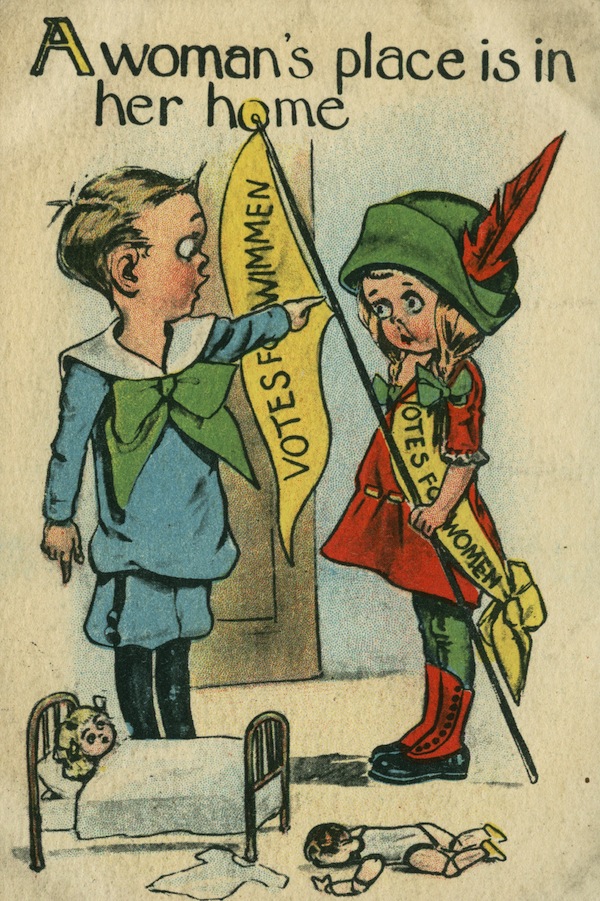
Anyway, I digress: my point is that it is not the responsibility of the woman to take all the burdens of a relationship on herself. She is under no obligation to match a perfect image of womanhood in order to be a true heroine. She only has to be true to herself.
In Gerwig’s movie, we can definitely see that. I think the best example is the relationship between Amy (played by Florench Pugh) and Laurie (played by Timothée Chalamet). Yes, Amy did love Laurie all her life, but she is unwilling to lower her dignity by saying “Yes” to him when he finally realizes that she has loved him all his life and tells her not to marry Fred. It doesn’t mean she has ceased to love him. In fact, it is precisely because Amy has spent her entire life loving Laurie that it does not make sense that she should not submit so easily. Unrequited love is much more difficult to endure than simply returning someone’s love, so Laurie must work to prove himself worthy of Amy. Nevertheless, rejecting someone you love is also hard to do, and I think Florence Pugh really did well in portraying that conflict in Gerwig’s movie (no wonder “Little Women” is considered one of Pugh’s breakthrough films!). So when they do in the end reconcile–and in a manner symbolic of Laurie’s dedication since he comes back promising to reform himself at a time when the March family has suffered a great loss–the reconciliation is much more satisfactory.
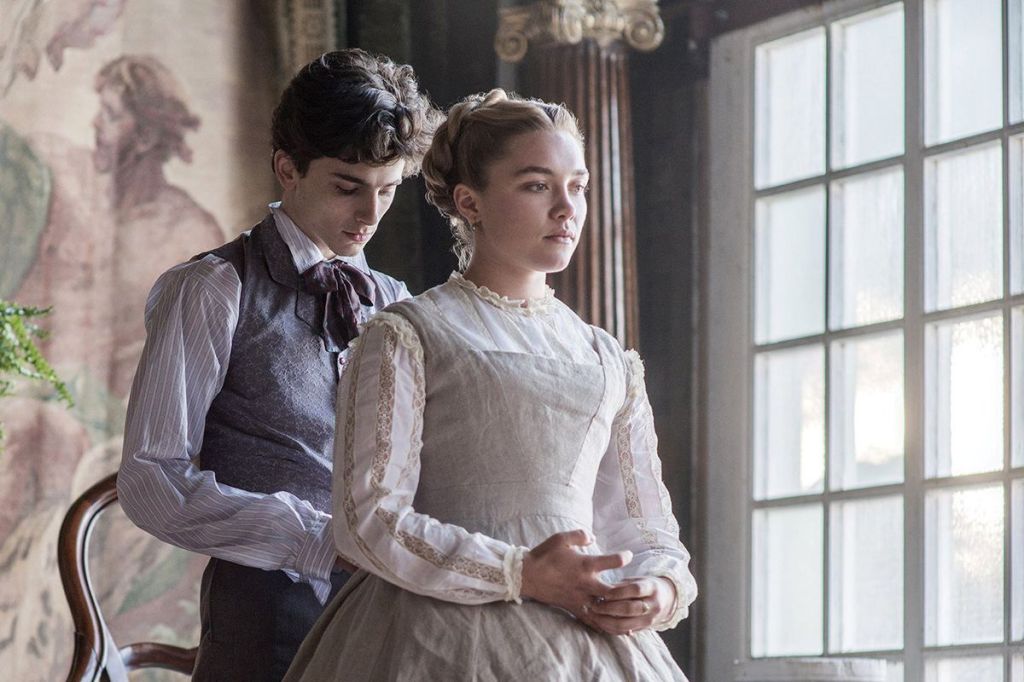
But for me, the greatest romance is Jo’s, and this is where Gerwig’s movie deviates most from the novel. In the novel, Jo’s ultimate reward comes at the point when she decides to relinquish her hopes of being a writer after seeing perfect little Beth pass away right before her eyes. As the novel describes:
“Then and there Jo renounced her old ambition, pledged herself to a new and better one [remaining at home], acknowledging the poverty of other desires, and feeling the blessed solace of a belief in the immortality of love.”
Now, do not laugh at this mockingly. One must remember that during those times, when women literally had no rights whatsoever, they must bear whatever injustices they suffer and get on with life. And so, while Alcott’s “Little Women” reads like a morality tale, a domestic Pilgrim’s Progress, an instruction manual for ideal womanhood defined by patriarchal ideology, we must remind ourselves that it is because they had no other choice that women resigned to their domestic roles. Once we’ve acknowledged that, we may be able to perceive the pains women took to fit themselves into such roles, sacrificing their childhood dreams. Thus, at the end of the novel, only Meg, who has had domestic aspirations from the very beginning of the story, comes the closest to realizing her “castle in the air”. Amy and Jo both have to console themselves that they have sacrificed their ambitions for a greater good. For me, great pain is contained between the lines of Alcott’s novel. However, Alcott does a good job in painting a rosy picture of her little women’s renunciation, as per the sentimentalist tradition, and so at the end of the novel “Unlucky Jo” has her “greatest wish…so beautifully gratified” and “a great tear dropped [from Amy] on the golden hair of the sleeping child in her arms”, and I must admit, I was very moved by Beth’s little poem which Jo read before Beth died.
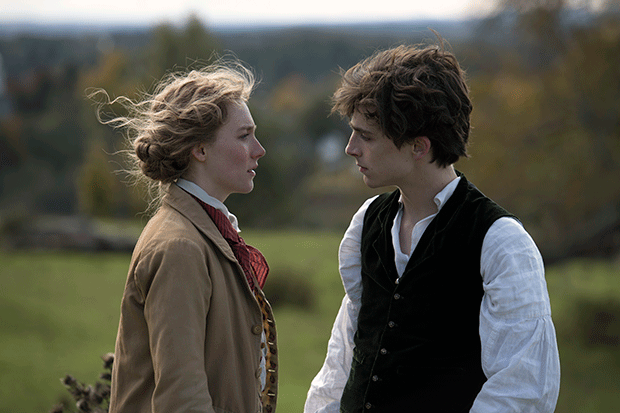
Greta Gerwig’s own ending
But Greta Gerwig is having none of that. She knows that Alcott, who projects herself onto Jo, remained single all her life. Unlike Jo, she remained faithful to her ambition of being a writer, and throughout her life had to struggle with poverty and unfair contracts in order to live out her “dream”. Gerwig exposes this reality by making use of the multiple-ending technique, thus turning the “rosy” ending of the novel into a joke, while imagining what reality would have been like for a strong character like Alcott in the second ending.
One must admit that the reality portrayed by the second ending isn’t great. And to have to end a novel with an unrealistic ending, knowing women readers will treat it as gospel, to perhaps realize that she is betraying her own artistic integrity for money, must have been even harder for a writer like Louisa May Alcott. In Gerwig’s movie, Jo’s (played by Saoirse Ronan) face at the end of the movie as she watches her novel being printed really says it all (by the way, that scene reminds of the credits scene in “Call Me By Your Name” when the camera stays on Elio staring into the fire!). Reality was hard for a female writer who decided against matrimony and desired financial independence in Alcott’s time, and Gerwig’s movie showed just how hard it was.
“Throughout history, women had all kinds of practice imagining themselves as men. On the flip side, men do not have quite as much practice imagining themselves as women.”
Greta Gerwig in an interview at 92nd Street Y
But Gerwig’s uncompromising desire to tell the truth, to portray an integral and strong heroine, is precisely what moved me most. What the audience nowadays desires in movies–especially Hollywood movies–are strong characters who have integrity. Like Tom Cruise in “Mission Impossible”, who is willing to risk everything or throw everything away in a second just to save his wife (not sure if this is a good example, someone please tell me if I’m wrong). Well, Greta Gerwig tells us, there you have it: Louisa May Alcott. Not Jo. Louisa. And she’s a real person too.
The fact that Greta Gerwig’s “Little Women” was able to capture my imagination so obsessively (I mean, to the point that I would read a nearly 500-page novel and dedicate a blog post to it; I mean, how many of you can even tell me you’re still reading this?) proves that women’s stories are not reserved for women only. Their courage and bravery in the face of patriarchy are worth so much more than we can imagine, and I think now is the time to begin to imagine it!
One thing Greta Gerwig said in her interview really stuck with me. She said:
“Throughout history, women had all kinds of practice imagining themselves as men. On the flip side, men do not have quite as much practice imagining themselves as women.”
I believe that is very true. For too long have novels written by women been relegated to labels such as “conventions”, “stereotypes”, “romances”, “fantasies”, so that even women have begun believing in them. Greta Gerwig reaches her arm into history and puts “Little Women” back on the table again, but this time telling us that it is not merely a girl’s fantasy nor yet another novel which shows that love and marriage is all that matters. She reads between the lines and shows what unnecessary pain and sacrifice women had to suffer in order to comply with what a patriarchal society expected of them. In fact, I think that after Greta Gerwig’s movie version, the course of “Little Women”‘s legacy will forever be changed.
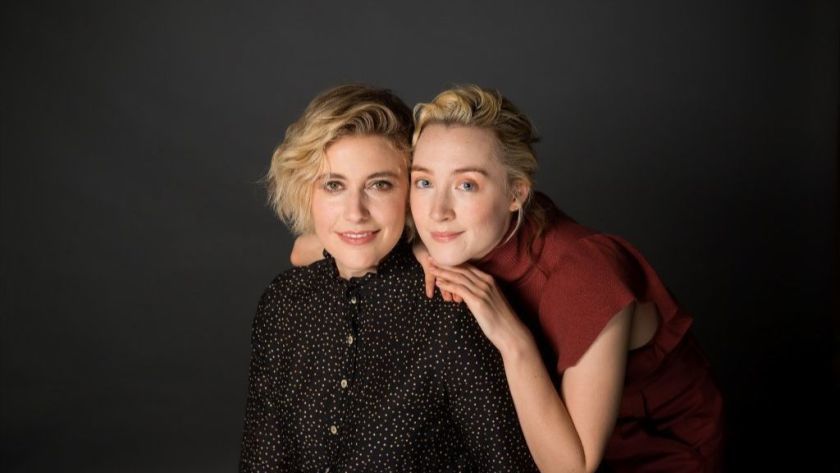
Having written all this, I am of course not trying to discredit the novel for being conforming or conventional; far from it. As I’ve said earlier, a lot of pain is contained between the lines of a novel, and I think it merits many rereadings. However, in this day and age, when everything is moving ever so quickly, and more and more books with catchier, more provocative and more controversial titles are put on shelves, it takes a bold move like Gerwig’s to restore the novel its deserved vitality and attention.
That being said, I’ve only ever seen two adaptations of “Little Women”: Gerwig’s and Gillian Armstrong’s 1994 version. I’d love to watch more adaptations (the BBC 3-part series is next on my list) of it and compare them.
There are so many great women writers who just have the most amazing faculties of creativity and imagination. Too often they have been branded as “feminist”, as if that is all that defines them. I am not well-versed in feminist history (although I certainly would like to read more on that), but for someone who enjoys reading, a strong heroine figure like Louisa May Alcott portrayed in Greta Gerwig’s “Little Women” is enough to fuel my imagination.
Further reading
Karen Hollinger and Teresa Winterhalter, “A Feminist Romance: Adapting Little Women to the Screen”, Tulsa Studies in Women’s Literature, 1999, 18/2, pp. 173-192 (can be found on Jstor)
Judith Fetterley, “‘Little Women’: Alcott’s Civil War”, Feminist Studies, 1979, 5/2, pp. 369-383 (can also be found on Jstor)
Videos to watch
“Comparing every Version of Little Women“: This is a brief but very interesting video comparing four different movie versions of Little Women which became Hollywood blockbusters.
“Greta Gerwig on Little Women“: Very inspiring interview with Greta Gerwig at 92nd Street Y. Must watch.
Photos from various sources, all found on Google.
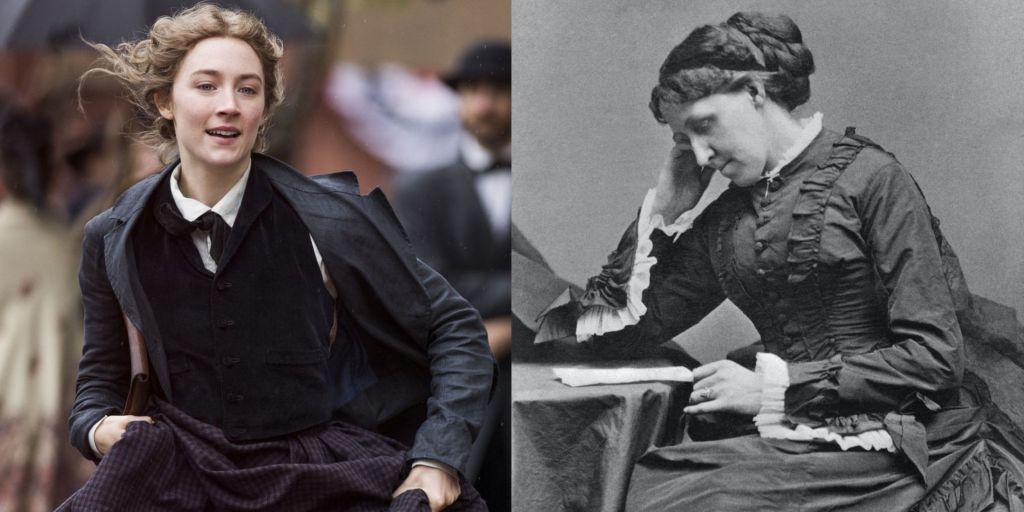
Leave a comment